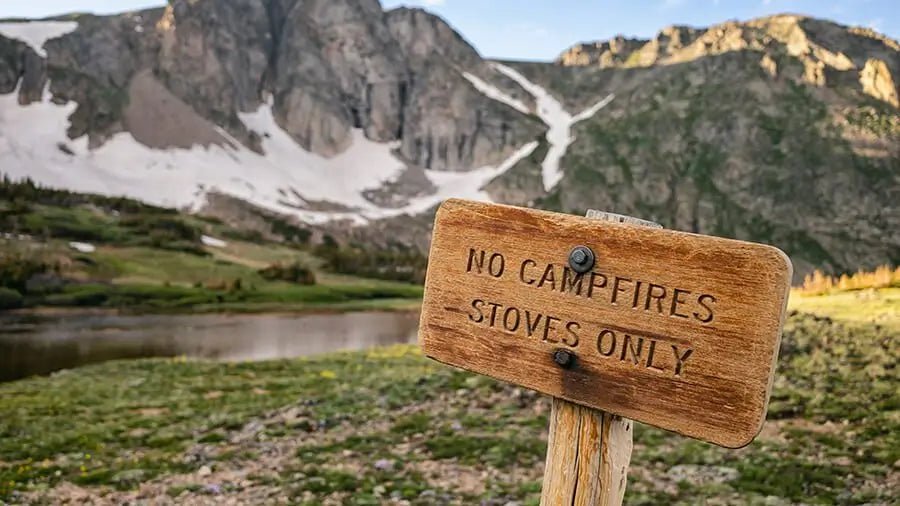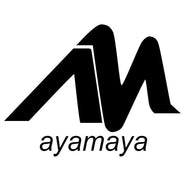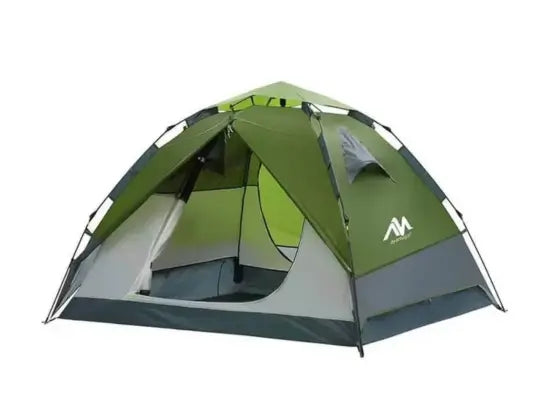Minimize Your Impact on Nature
Embarking on outdoor adventures demands a deep commitment to environmental stewardship and nature preservation. This article delves into the core of Leave-No-Trace Principles, guiding you through sustainable outdoor ethics essential for low-impact camping and eco-friendly hiking. We'll explore responsible camping practices that not only safeguard alpine ecosystems and desert terrains but also emphasize wetland preservation and coastal environment care. As we journey through backcountry waste disposal methods and forested area conservation, we underscore the significance of wildlife protection and environmental impact reduction. Our goal is to equip you with the knowledge for eco-conscious travel and nature-friendly recreation, ensuring that your outdoor adventures harmonize with wilderness conservation and outdoor adventure sustainability.
Chapter 1: Principles of Leave-No-Trace Camping
- Plan Ahead and Prepare: Research and prepare for your trip. Know the regulations and special concerns for the area you'll visit. Prepare for extreme weather, hazards, and emergencies.
- Travel and Camp on Durable Surfaces: Stick to established trails and campsites. In pristine areas, disperse use to prevent the creation of new trails and sites.
- Dispose of Waste Properly: Pack it in, pack it out. Inspect your campsite and rest areas for trash and spilled foods. Pack out all trash, leftover food, and litter.
- Leave What You Find: Preserve the past; examine, but do not touch, cultural or historic structures and artifacts. Leave rocks, plants, and other natural objects as you find them.
- Minimize Campfire Impacts: Use a lightweight stove for cooking and enjoy a candle lantern for light. Where fires are permitted, use established fire rings, and keep fires small.
- Respect Wildlife: Observe wildlife from a distance. Do not follow or approach them. Never feed animals as feeding wildlife damages their health and alters natural behaviors.
- Be Considerate of Other Visitors: Respect other visitors and protect the quality of their experience. Be courteous, yield to other users on the trail, and take breaks away from trails and other visitors.

Chapter 2: Low-Impact Campsite Setup
Setting up a campsite with minimal impact on the environment is a key component of Leave-No-Trace camping. Here are some additional guidelines to follow:
Site Selection & Setup:
- Avoid Fragile Areas: Identify and avoid camping on fragile surfaces such as meadows, wetlands, and areas with delicate vegetation. Look for hardy surfaces that can withstand the impact of a tent.
- Distance from Water Sources: Set up camp at least 200 feet away from lakes and streams to protect water quality and aquatic habitats. While this is a good guideline, use your good judgement as there will certainly be some areas closer to lakes and streams that could be appropriate when camping lightly.
- Maximize Use of Existing Sites: Use established sites to concentrate impact in areas that are already altered. This helps to prevent the expansion of impacted areas and the creation of new sites.
Tent & Shelter Considerations:
- Tent Size and Footprint: Choose a tent that suits the size of your group. Avoid oversized tents that require more space and potentially more vegetation clearing.
- Natural Windbreaks: Utilize natural features like boulders or fallen logs as windbreaks rather than building structures or altering the environment.
- Ground Tarps: Use a ground tarp under your tent to minimize damage to the ground. Ensure it does not extend beyond the tent's perimeter to prevent water from pooling.

Managing Your Campsite:
- Cooking Areas: Set up cooking areas on durable surfaces, away from your tent. Use a camping stove rather than open fires, as stoves leave less impact and are safer.
- Camp Furniture: Avoid moving rocks, logs, or other natural features to create seating. Bring along lightweight camping chairs or use existing logs and rocks at established sites.
- Noise and Lighting: Keep noise levels to a minimum to avoid disturbing wildlife and other campers. Use headlamps or small camp lights rather than bright lanterns to reduce light pollution.
Leaving the Campsite:
- Natural Restoration: Before leaving, restore the site to its natural state as much as possible. Replace any rocks or sticks you may have moved, and brush away footprints and tent marks.
- Final Inspection: Do a thorough sweep for trash and personal belongings. Leave the site cleaner than you found it, picking up any litter, even if it's not yours. Great for tallying up a few extra karma points.
By practicing these low-impact campsite setup techniques, campers can significantly reduce their ecological footprint and help preserve the natural integrity of the outdoors. This approach not only aligns with the Leave-No-Trace principles but also ensures a sustainable future for outdoor recreational activities.
Chapter 3: Waste Disposal in the Backcountry
Proper waste disposal is crucial in preserving the natural environment and preventing pollution in backcountry areas. Here are detailed guidelines and techniques:
Solid Waste Management:
- 'Pack It In, Pack It Out': This mantra is the golden rule for all solid waste. All packaging, food scraps, and litter should be carried out of the backcountry.
- Garbage Bagging: Use resealable bags or containers to pack out trash. Double-bagging can prevent leaks and odors.
- Minimizing Waste: Plan meals and packaging to minimize waste. Use reusable containers and avoid single-use plastics.
Human Waste Disposal:
- Cat Holes: For human waste, cat holes are the most widely accepted method. Dig a hole 6-8 inches deep and at least 200 feet from water, trails, and camp. Cover it with natural materials afterward.
- Toilet Paper and Hygiene: Pack out used toilet paper in a sealed plastic bag. Alternatively, use natural materials like stones, snow, or non-poisonous leaves, but these should also be buried in the cat hole.
- Portable Toilets: In some areas, portable toilets or waste bags (WAG bags) are required. These must be packed out and disposed of properly.
Waste Water Disposal:
- Dishwashing: Use small amounts of biodegradable soap. Strain food particles from dishwater and pack them out. Scatter the strained water over a wide area, well away from water sources.
- Bathing: If bathing, do so at least 200 feet away from water sources. Use biodegradable soap sparingly. A washcloth and water in a basin is more effective than soap. Avoid using any type of soap, including biodegradable variants, in lakes or rivers if you decide to bath naturally.
Special Considerations:
- Feminine Hygiene: Products like sanitary napkins and tampons should be packed out. Consider using menstrual cups or reusable pads as more sustainable options.
- Food Waste: To avoid attracting wildlife, do not bury or leave food scraps. Pack out all food waste, including peels and cores.
Education & Preparation
- Know Local Regulations: Some areas have specific rules for waste disposal, especially in sensitive environments. Always check local guidelines.
- Leave-No-Trace Training: Consider taking a Leave-No-Trace course or workshop to learn more about effective and environmentally friendly waste disposal methods.
Proper waste disposal practices in the backcountry are essential for maintaining the health and beauty of natural ecosystems. By adhering to these practices, hikers and campers can ensure that they leave a minimal impact on the environment and contribute to the preservation of these areas for future generations.

Chapter 4: Leave-No-Trace Ethics for Different Environments
The Leave-No-Trace principles can and should be adapted to suit various environments. Each ecosystem has its unique sensitivities, and understanding how to minimize impact in these diverse settings is crucial.
Mountainous and Alpine Environments:
- Trail Use: Stick to marked trails to protect fragile alpine vegetation. In these environments, plant life is slow-growing and easily damaged.
- Camping: Camp on durable surfaces such as rock, snow, or dry grass. Avoid creating new campsites in untouched areas.
- Weather Considerations: Be prepared for rapid weather changes and minimize your impact by avoiding sensitive areas during bad weather.
Desert Environments:
- Travel on Durable Surfaces: Desert soil is often home to cryptobiotic crust, a living soil that's crucial to the desert ecosystem. Walking or camping on this crust causes long-term damage.
- Water Sources: Be extra cautious around water sources in deserts, as they are rare and vital for wildlife.
- Campfires: Avoid making campfires in the desert, as wood is scarce and the fire scars can last for decades.
Wetlands & River Corridors:
- Stay on Trails: To protect the delicate soil and plant life, stick to established trails and avoid trampling vegetation.
- Camping: Set up camp in designated areas or previously disturbed sites to minimize impact on wetland ecosystems.
- Respect Wildlife: Wetlands are often rich in biodiversity. Observe wildlife from a distance and avoid disrupting their natural habitats.

Coastal & Beach Environments:
- Beach Camping: Camp above the high tide line to avoid impacting sensitive beach ecosystems and avoid disturbing nesting sea birds or turtles.
- Sand Dunes: Avoid walking or camping on sand dunes. They are easily damaged and are crucial for coastal protection.
- Tidal Awareness: Be aware of tides to avoid being caught in dangerous situations and to minimize disturbance to intertidal life.
- Firewood: Use only fallen wood for fires and keep fires small. Avoid transporting firewood between locations to prevent the spread of diseases and pests.
General Considerations:
- Wildlife Interactions: Feeding wildlife is harmful in any environment. Store your food securely and observe animals from a distance.
- Cultural Respect: Be aware of and respect any cultural or historical sites. Leave artifacts undisturbed.
Final Thoughts
In our comprehensive exploration of responsible outdoor conduct, we have woven together crucial aspects of Leave-No-Trace Principles, highlighting the importance of sustainable outdoor ethics and environmental stewardship. From alpine ecosystem protection to desert camping etiquette, and from wetland preservation to coastal environment care, we've covered a diverse range of settings. This article has not only focused on minimizing your ecological footprint through responsible camping practices and backcountry waste disposal but has also emphasized the broader context of wilderness conservation and eco-friendly hiking. By adopting these guidelines, you contribute to forested area conservation, wildlife protection, and nature preservation, playing a vital role in the ongoing narrative of environmental impact reduction. Remember, each step you take in nature, whether in a dense forest or a fragile desert, should reflect a commitment to eco-conscious travel and nature-friendly recreation, ensuring that the beauty and integrity of our planet are maintained for future generations of outdoor enthusiasts. We hope this guideline has been helpful. Please reach out to us if you have any questions or suggestions. Thanks for reading!









